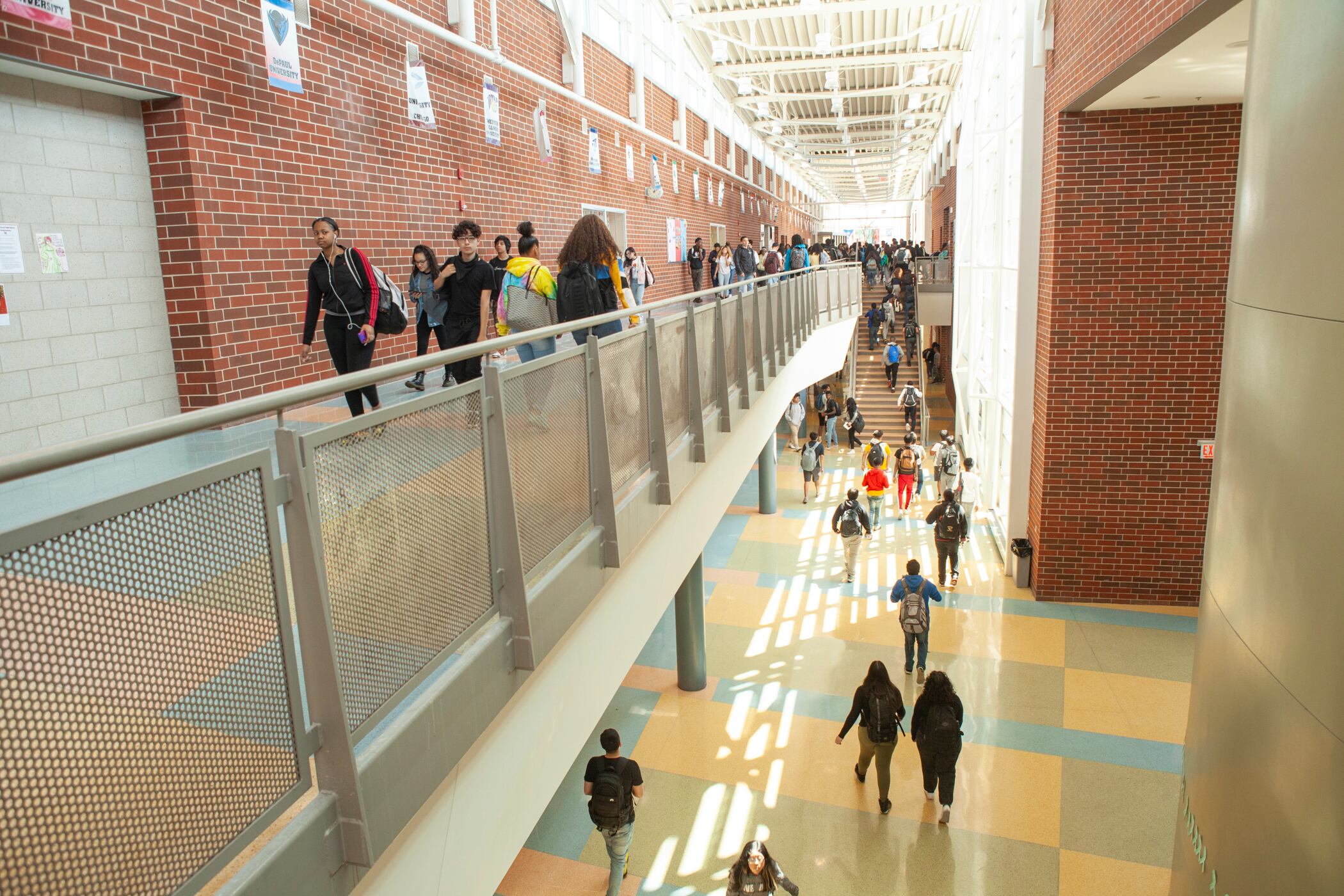Sign up for Chalkbeat Chicago’s free daily newsletter to keep up with the latest education news.
Some Illinois schools will likely experience major shifts this school year as federal COVID relief funds end, district budgets get tighter, and students continue to recover from school disruptions during the height of the pandemic.
State Superintendent Tony Sanders, who transitioned from district superintendent of Elgin’s U-46 to state superintendent in 2023, oversees education policies that will impact almost two million students across the state.

Chalkbeat Chicago sat down with Sanders to talk about what’s next for the state board after COVID relief funds end in September, support for schools that have seen an increase in newcomer enrollment, the state’s literacy plan, and other education issues.
“It’s nothing better than working in an area where you have a lot of support from our sitting governor and legislators,” Sanders said. “Everybody cares about public education, and so it’s pretty easy to have conversations about what’s best for kids.”
This interview has been lightly edited for clarity.
School year 2024-25 will be a challenging time for school districts as they grapple with tighter budgets. What are your top concerns for the state’s almost two million students?
A Harvard and Stanford Universities study showed that Illinois is one of three states that has made up ground and has returned to pre-pandemic levels in English Language Arts. I don’t think that would have been possible if Illinois had not passed evidence-based funding before the pandemic. Illinois is one of the few states where the legislature and governor has continued to invest annually in public education, and that’s a result of that negotiated evidence-based funding formula. It does not mean districts won’t have challenges in their budgets. As we move forward, the state’s going to have challenges in its budget.
The state board’s share of federal COVID-19 relief dollars is also expected to end in September. The state board created initiatives like a digital equity grant and a mentorship program for teachers among other initiatives. Will the state board continue some of these programs without federal COVID relief funds or will they disappear?
This year within the state budget, we were able to work with the governor’s office and legislators on sustaining some of these programs. For example, we were able to secure some state dollars to support our Student Care Department — which monitors restraint, time-out, and student isolation — which was created using COVID relief funds. We’ve been able to use the extension on COVID relief funds that the federal government gave us to continue programs such as SEL [Social Emotional Learning] Hubs, teacher mentoring, and principal mentoring. One of the things you didn’t see make it into this year’s budget was high-impact tutoring. It was effective, but it was also very expensive.
Next fiscal year, the State Board of Education will have some deeper conversation to see what programs local school districts or the state will help us support or if there are other grants or opportunities for us to start seeking out.
Illinois has had a teacher shortage for the past several years. School districts have seen vacancies in areas like bilingual education and special education. What are some ways the state is trying to alleviate these pain points for schools?
A few years ago, we set a new [teacher] minimum [salaries] across the state. Across Midwestern states, Illinois is 18% higher than our peers for teacher salaries. Wages is one of the keys to recruiting and retaining quality staff. The other thing that sets Illinois apart is that we truly value the art of teaching and allowing teachers the ability to teach, bring their best selves to their profession, and to be able to teach in culturally responsive ways for our students. We do not ban books in Illinois. Teachers live without fear of losing their jobs or being criminally prosecuted for teaching sensitive subjects. So in Illinois, I think we’re doing a good job trying to uplift the profession and recognize the professionalism that teachers bring to their classrooms every single day.
Financially, the state’s also done a lot to support the teacher pipeline. The General Assembly just invested $45 million into teacher vacancy grants that’s going to the 20% of districts in Illinois that have 80% of the vacancies. Those districts are using those funds for tuition reimbursement and offering professional learning opportunities for bilingual and special education teachers in their districts.
Illinois has approved a comprehensive literacy plan. What is the next step to ensuring that all students are learning how to read?
We’re going to continue the work of ensuring that as we build out our support that is grounded in quality core instruction for all students and every school district is engaged in continuous school improvement processes that improve outcomes for kids and part of that is the literacy plan. We’re making sure that we provide resources and tools to school districts, teachers, and schools to determine if they have a clear and viable curriculum for literacy, that they’re using best practices based on what the research says kids need to know and be able to do related to literacy.
According to recent test scores, Illinois students are regaining ground in reading proficiency but smaller gains have been seen in math. Is the State Board of Education looking at ways to improve how math is taught?
We are, but we don’t have anything official at this point. We’re having conversations about how to improve math instruction.
Some local school districts have seen an uptick in the enrollment of newcomers. School leaders and education advocates have asked lawmakers for more funding to support migrant students. The State Board of Education asked for $35 million in its proposed FY 2025 budget, which the General Assembly did not approve. What is the State Board of Education planning to do next to support schools serving an influx of migrant students?
We approached the federal government last year and have been able to work to get about $10 million in school improvement funds set aside for the districts.
This last year, we were also able to provide about $25 million in a “Stronger Connections” grant, a federal grant, to school districts that had a significant number of newcomer students. On top of those funds, school districts can use Title I and McKinney-Vento Funds to support newcomers.
Illinois schools are continuing to see high rates of chronic absenteeism in schools. What is the state doing to bring students back into the classroom?
We have a lot of work to do around not only encouraging and incentivizing attendance, but also having schools that kids want to be a part of. I know a lot of the work that school districts are doing right now is around school culture and climate to make sure that students feel welcome and that they know that school is a place where they can be safe. But it’s just not moving fast enough. We’re doing our best but it’s going to be one of the longer term post-COVID things that we’re going to have to grapple with.
Samantha Smylie is the state education reporter for Chalkbeat Chicago covering school districts across the state, legislation, special education and the state board of education. Contact Samantha at ssmylie@chalkbeat.org.






